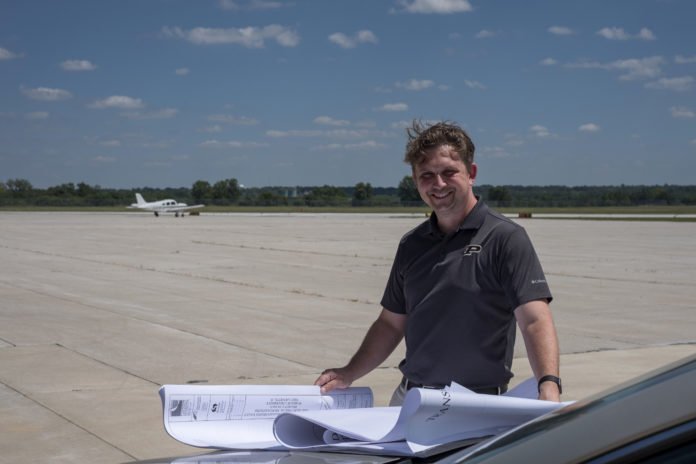There are almost 521 airport traffic control towers in the US. Nearly 20,000 U.S. airports reported that documenting flight operations is a bit challenging.
Airport operations – the arrivals and departures of flights- are ordinarily logged through traffic control towers, yet airplane terminals without control towers confront more noteworthy challenges in collecting data.
Scientists at the Purdue University have developed a product called Blueavion f1, launched Monday (July 23) by Bluemac Analytics Inc. to help airports more accurately log airport operations. This technology can help the airport more accurately log its flight operations.
Purdue University Airport is the second busiest airport in the state of Indiana and opens 24 hours a day, Lafayette Air Traffic Control Tower operates only during the busiest hours, a common situation found at many towers. This is one of the reasons why the Purdue University Airport participated in the testing of the Blueavion innovation.
Adam Baxmeyer, manager of Purdue University Airport said, “Our control tower is open 14 hours a day, so that means we have 10 hours a day where we have to find other means to capture operations data. We have been able to advance our data collection through this new technology and capture data we might otherwise miss.”
Bluemac Analytics is a hardware system, data, and analysis company serving transportation agencies around the globe.
Keith Szot, CEO of Bluemac said, “The sky is just going to get more crowded, and we’ve been looking for something that can help the many smaller airports that need a system to automatically log operations. What we wanted was something that is cost-effective and can precisely understand how an airport is used. More accurate data also can help airports apply for an FAA Airport Improvement Program grant that can be used for the planning, improvement, and development of public-use airports.”
The technology, developed by Darcy Bullock, the Lyles Family Professor of Civil Engineering and director of the Joint Transportation Research Program, and John Mott, associate professor in the Purdue Polytechnic Institute School of Aviation and Transportation Technology, features a transponder data collection system that provides a more accurate method to determine the number of operations an airport has in a given time.
Baxmeyer said, “Being part of the field test for the Blueavion f1 technology helped us become even more accurate during the overnight hours when the control tower is not in operation.
Mott said, “What we have developed is a way to utilize the transponder signals broadcast by most aircraft to compute the distances of those aircraft from our portable receiver and data collection device. These distance computations are used along with additional parameters such as aircraft altitude to determine whether an aircraft is taking off or landing at a particular airport. This is an improvement over the conventional method of acoustic counting technology, which typically captures only a portion of total operations.”
“The Blueavion f1 technology is placed near runways and is able to self-calibrate. “
“Any small airport interested in improving its operations counting accuracy can benefit from the technology. More than that, it can be extended to provide improvements in safety and operational efficiency, as well.”
Bullock said, “How many planes use the airport, is usage increasing or decreasing, what does the airport need to maintain its high level of service? For many of the smaller airports, it is not unusual for planes to come in and out, and they won’t know about it because they can’t be managed 24/7. Our goal with this technology is to help these smaller airports.”
